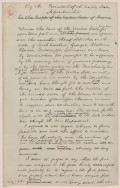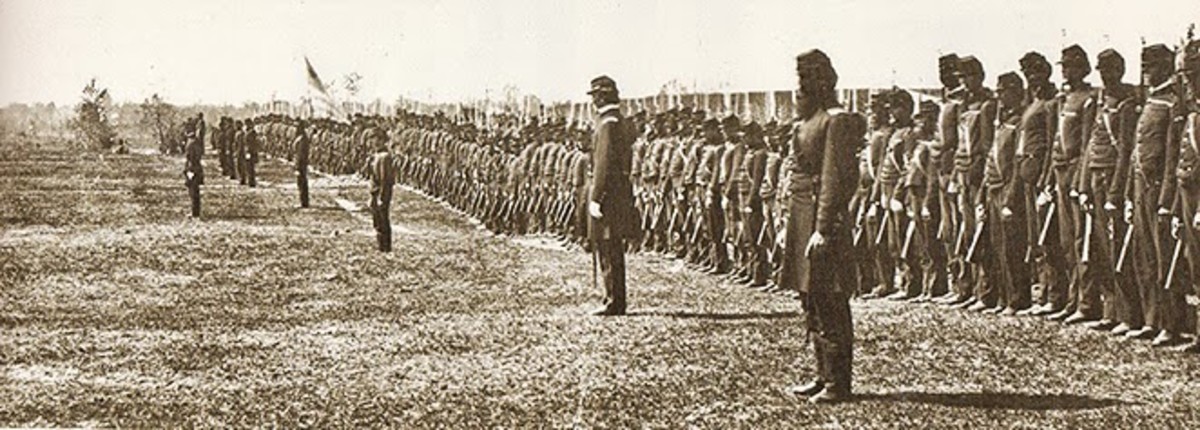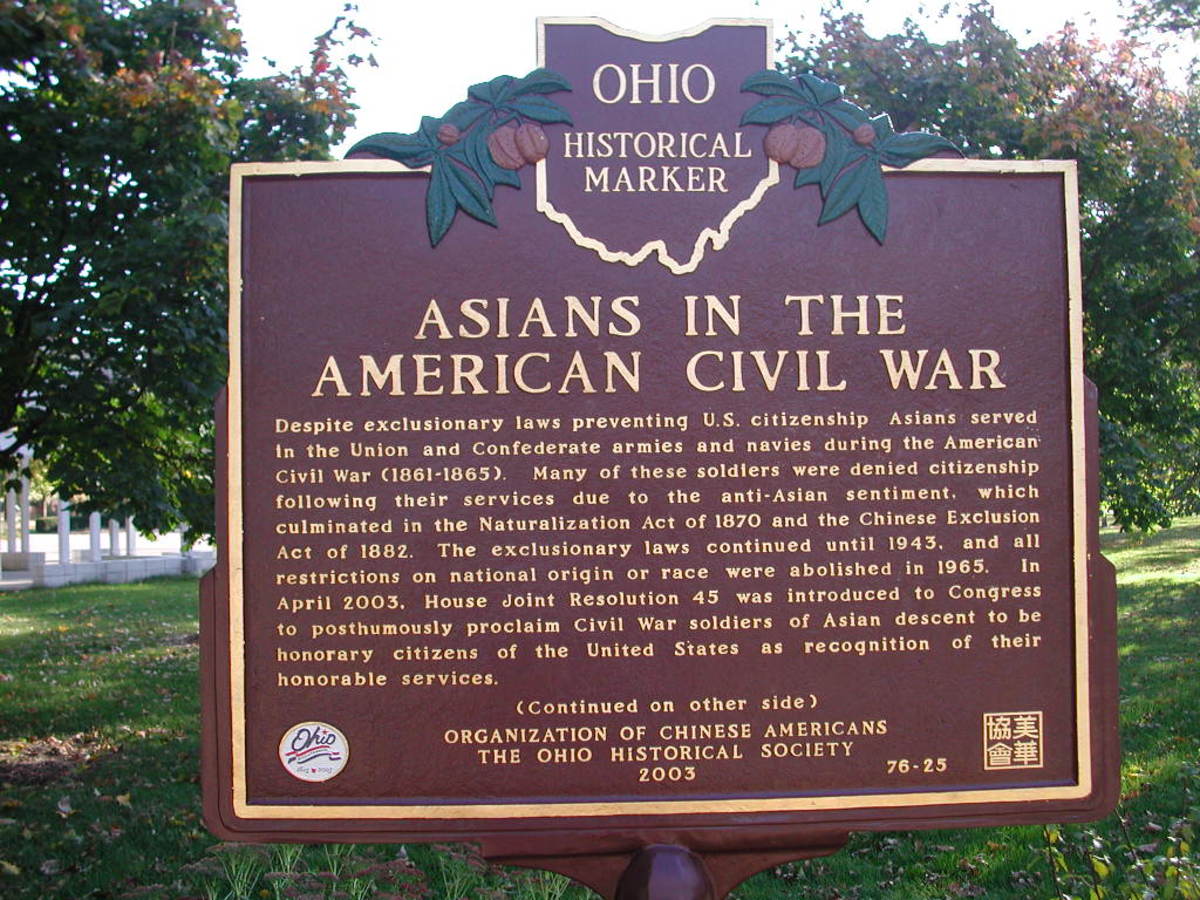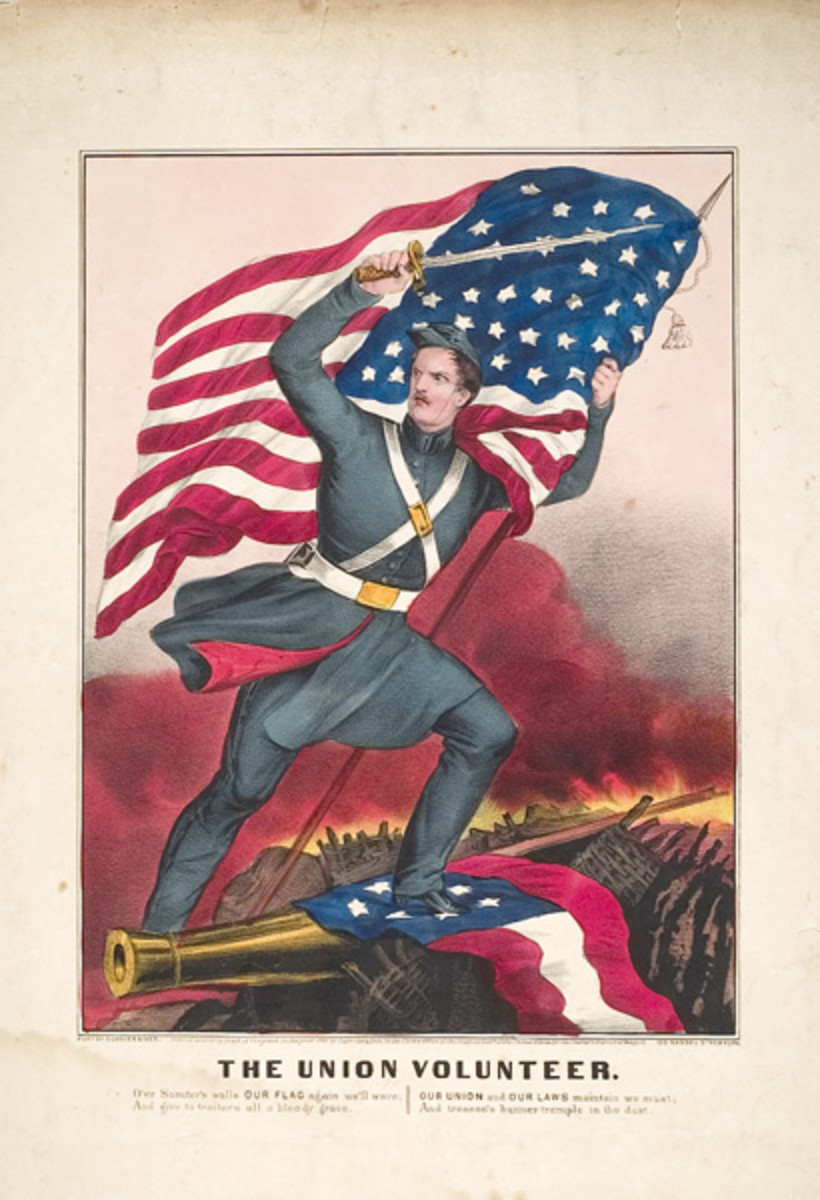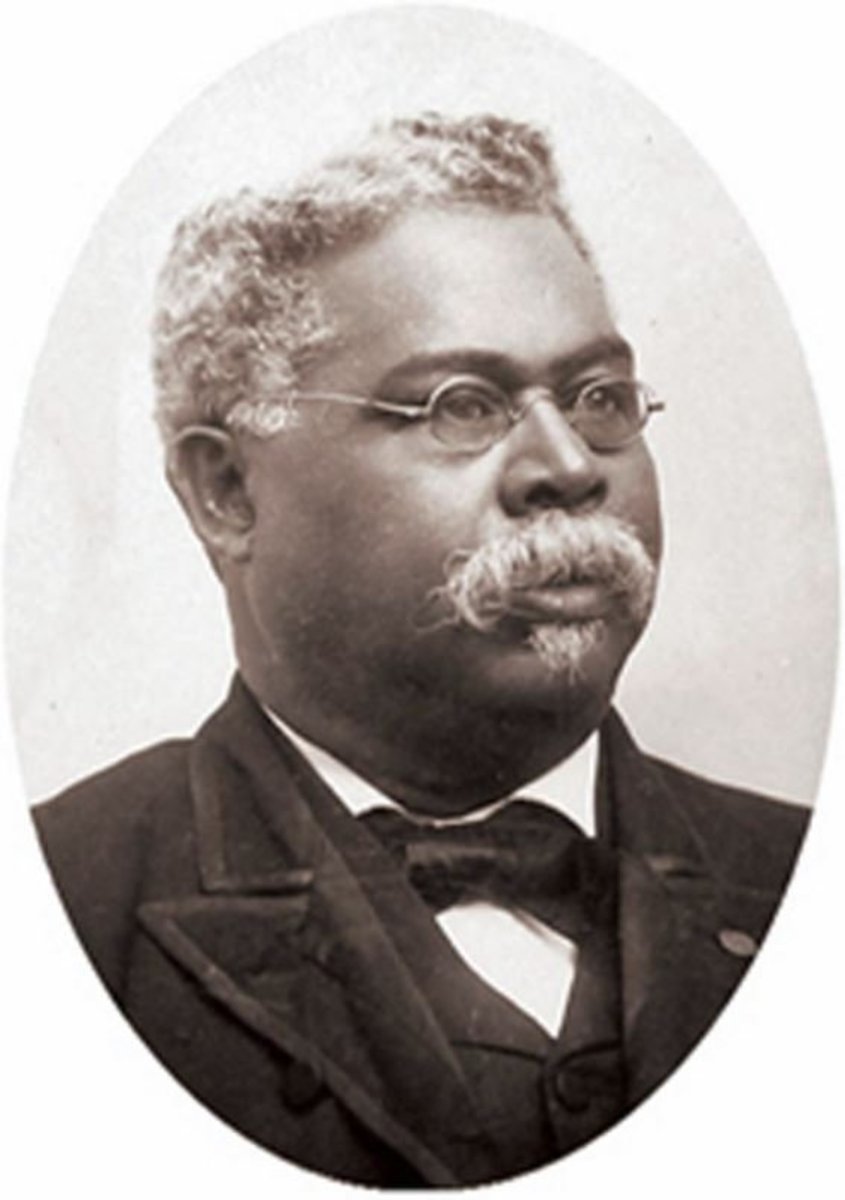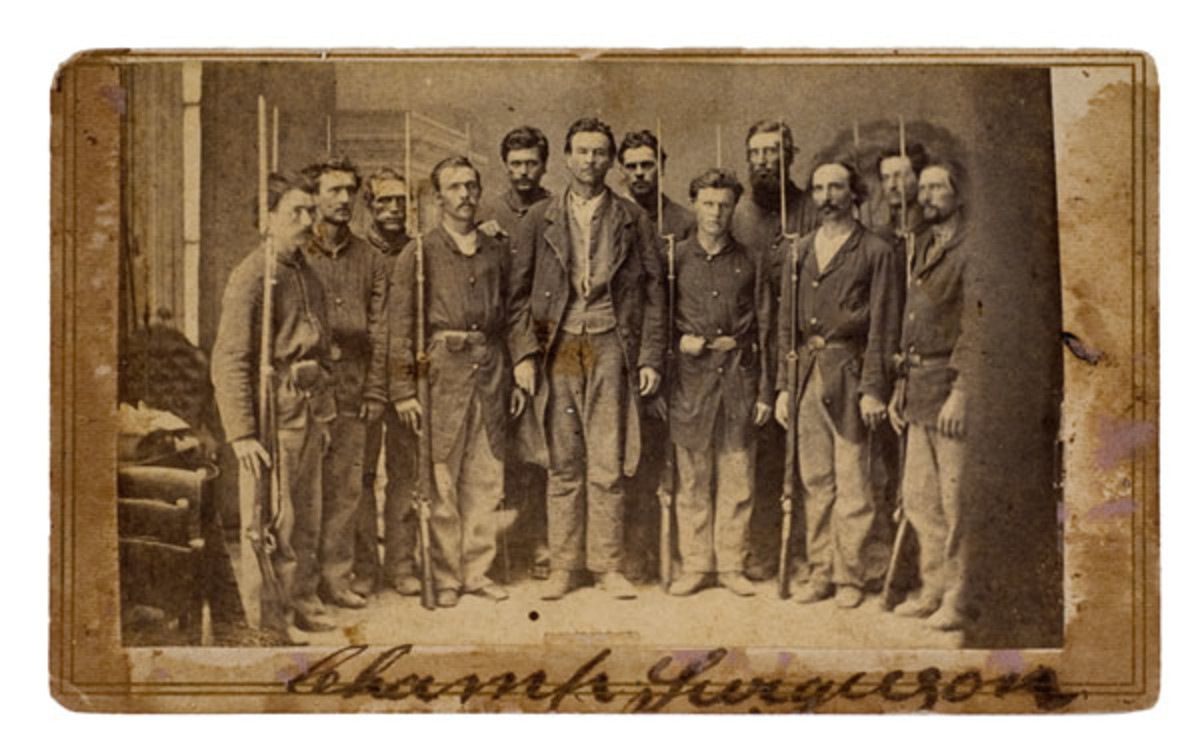- HubPages»
- Education and Science»
- History & Archaeology»
- History of the Americas»
- American History
The First Week of the American Civil War
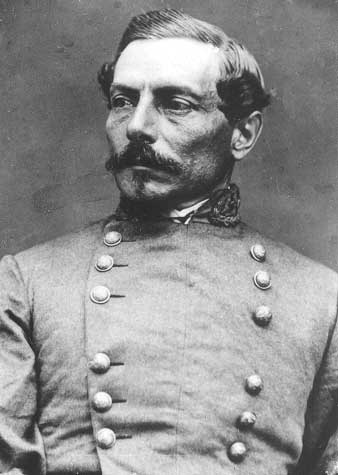
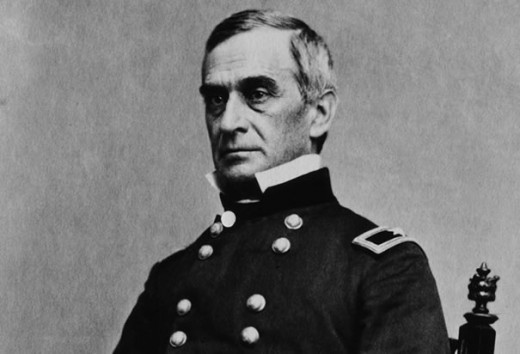
The American Civil War Begins
Friday, April 12, 1861
The beginning of the war that will drag on for four years starts at 4:30 a.m. when the Confederates open fire on Fort Sumter in Charleston Harbor. Captain George S. James stationed at Fort Johnson gave the order to commence firing after Major Robert Anderson refused to surrender the fort to General P.G.T. Beauregard. Edmund Ruffin, a 70 year-old Virginian, was given the order to light the fuse on the cannon to fire the first shot toward Fort Sumter. The bombardment will continue throughout the day until Major Robert Anderson surrendered the fort 34 hours later without any casualties.
Here is and eye-witness account of what was going on in the during the bombardmentort from Captain Abner Doubleday of Company E, 1st United States Artillery from Reminiscences Of Fort Sumter and Moultrie 1860-1861. Doubleday gave the order to fire the first gun in defense of Fort Sumter
"By 11 a.m. the conflagration was terrible and disastrous. Pbe-fifth of the fort was on fire, and the wind drove the smoke in dense masses into the angle where we had all taken refuge, It seemed impossible to escape suffocation. Some lay down close to the ground, with handkerchiefs over their mouths...every one suffered severely...the scene at this time was really terrific. The roaring and crackling of the flames, the dense masses of whirling smoke, the bursting of the enemy's shells, and our own which were exploding in the burning rooms, the crashing of the shot, and the sound of masonry falling in every direction, made the fort a pandemonium. When at last nothing was left of the building but the blackened walls and smoldering embers, it became painfully evident that an immense amount of the damage had been done...about 12:48 p.m. he end of the flag-staff was shot down, and the flag fell down."
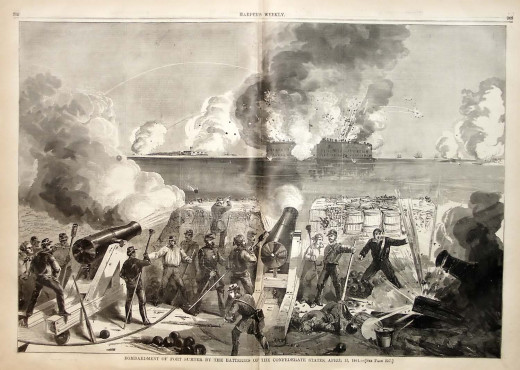
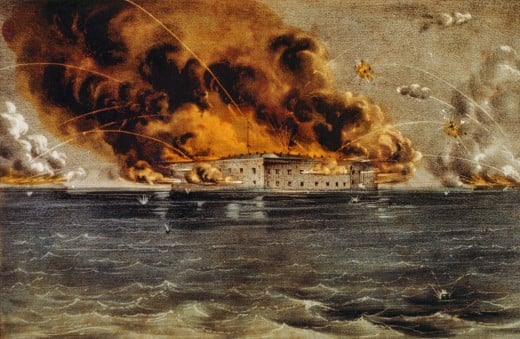
Meanwhile on this day, a few hundred miles south of Charleston, Union reinforcements land on the island of Santa Rosa in Florida to secure Fort Picken, a vital stronghold for the Gulf Coast.
Major Robert Anderson Surrenders
Saturday, April 13, 1861
After 34 hours of bombardment on Fort Sumter, Major Robert Anderson surrenders the 68-man Federal garrison there. Without provisions and undermanned to use the 60 cannons positioned around the perimeter of the fort; he had no choice but to give up the fort at the entrance of Charleston Harbor. Amazingly, casualties at the fort was light and there was no loss of life despite the fact that 3,341 shells were fired during the bombardment. However, one horse was killed during the shelling. After his surrender, Anderson was allow to take with him the torn American flag before sailing north to the United States.
The Chicago Tribune brought news of the bombardment and the surrender of Fort Sumter to the public two days later on April 15, 1861.
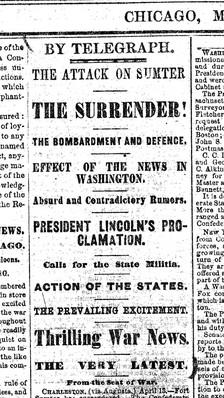
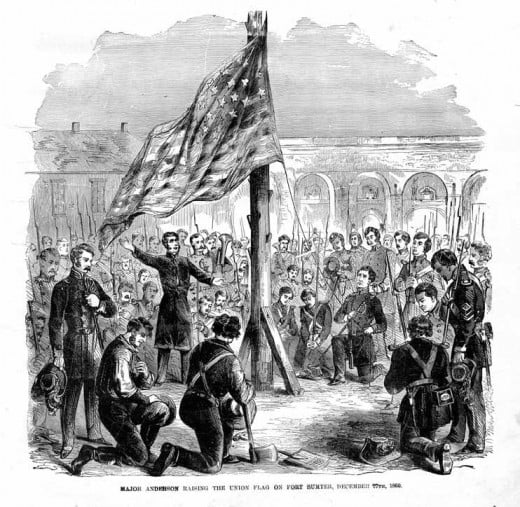
President Abraham Lincoln Receives News of the Surrender
Sunday, April 14, 1861
President Lincoln and his cabinet receive official word that Fort Sumter has surrendered.
Major Robert Anderson officially leaves the fort after the ceremony for the lowering of the United States flag. Ironically, the first fatalities of the war occurs when two Union soldiers are killed by an accidental explosion during the ceremony.
Both the North and South are ill-prepared to fight a war. The small prewar armed forces of about 16,000 U.S. army soldiers now divided between the North and the South had no means to fight each other on a significant scale. Both sides began assembling all-volunteer armies in preparation with both sides thinking that this was going to be a short war. For the North, matters got worst since many of the Southern generals resigned from the U.S. army to join the Confederacy army when the war began.
In terms of the reasons why they were fighting, both sides had different objectives for fighting in the fast approaching war. The South was on the defensive and had a slight advantage for that reason over the North. They just needed to survive . The North needed to defeat the enemy and bring the secession to an end to win.
In spite of that, the North had an advantage over the South in population size and industrial power and financial resources. On land the South had better generals leading them in the beginning of the war than the North. But the North had a better Naval force all along the Confederacy's coast and its rivers. However, the Union's superior resources eventually gave them the win the nation desperately needed four years later.
President Lincoln Issues A Proclamation For Volunteers
Monday, April 15, 1861
President Lincoln sends out a call for 75,000 volunteers in preparation for what he believes to be a short and swift war against the South, by issuing the first of many proclamations that he will issue as President during the war. Posters such as the one shown below were posted in many places in the North and in the South to organize large armies for the war. The volunteers were only require to fight for 90 days since the president and other politicians on both sides assumed this would be a short war. Unfortunately, the war would drag on longer than the expected 90-day time limit for of many of the volunteers who ultimately stays in the war longer with some fighting the entire four years.
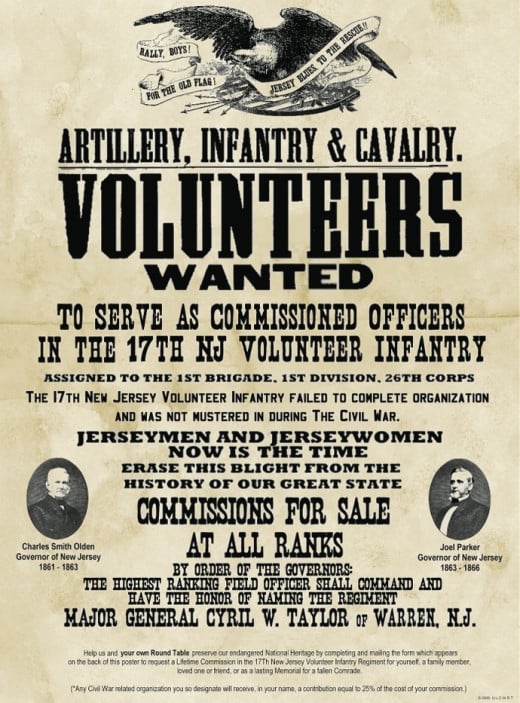
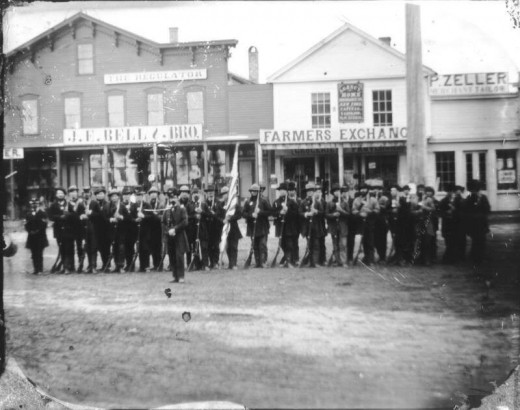
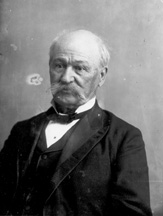
Defiant Tennessee Sends No Volunteers
Tuesday, April 16, 1861
After the South Carolina legislature voted unanimously back on December 20, 1860 to secede from the Union; over the following six weeks Mississippi, Florida, Alabama, Georgia, Louisiana and Texas also secede from the Union to join the Southern Confederacy.
However, the governors of the slave states that have not seceded from the Union yet; Virginia, North Carolina, Kentucky, Tennessee, Missouri, and Arkansas; before the start of the civil war, make it clear that they will be joining the Confederacy soon. Governor Isham G. Harris of Tennessee in a hostile reply to Lincoln's appeal for volunteers, "Tennessee wii not furnish a single man for coercion, but 50,000 if necessary, for the defense of our rights, or those of our Southern brethren."
The Seceded States
State
| Date seceded from Union
|
|---|---|
South Carolina
| December 20, 1860
|
Mississippi
| January 9, 1861
|
Florida
| January 10, 1861
|
Alabama
| January 11, 1861
|
Georgia
| January 29, 1861
|
Louisiana
| January 26, 1861
|
Texas
| February 1, 1861
|
Virginia
| April 17, 1861
|
Arkansas
| May 8, 1861
|
Tennessee
| May 7, 1861
|
North Carolina
| May 20, 1861
|
Missouri
| October 31, 1861
|
Kentucky
| November 20, 1861
|
Virginia Secedes From The Union
Wednesday, April 17, 1861
Virginia officially joins the Confederacy after the delegates at the Virginia Convention pass the Ordinance of Secession. The Southern states did not just separate themselves from the Union. They signed this document to make it official. This ordinance of Secession was a document drafted and ratified by each seceding state by their respective convention delegates; with the Southern secession beginning with South Carolina being the first state to secede from the Union in late December 1860.
Secession of the Southern states will continue up until November 1861 when Kentucky becomes the final state to secede from the Union, despite the fact that the two sides have been fighting for nearly eight months. The 13 states of the Confederacy seceded from the Union in the order listed in the table to the right.
Below is the Ordinance of Secession document for the State of Georgia signed by the delegates when Georgia officially seceded from the Union on January 19, 1861.
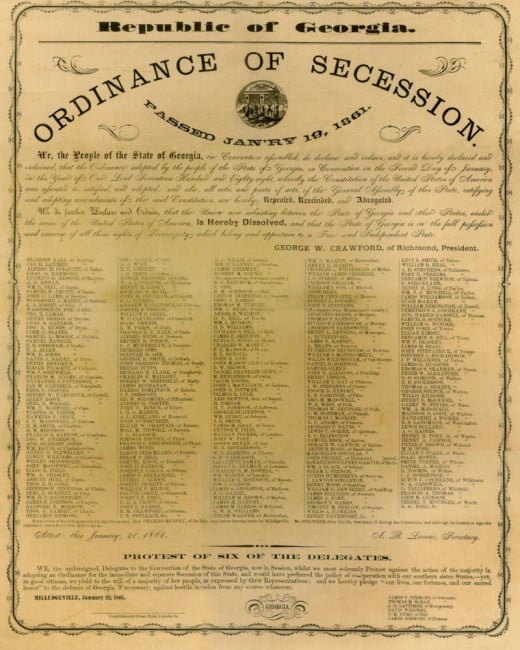
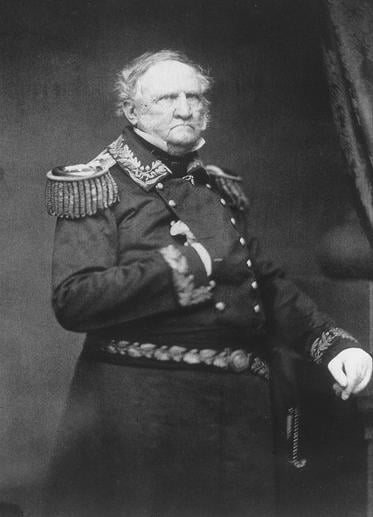
Lee Turns Down Lincoln's offer To Command the Federal Army
Thursday, April 18, 1861
General Winfield Scott, now 75, urges President Lincoln to offer Colonel Robert E. Lee command of the Federal Army. Lee turns down his offer to serve his home state of Virginia. Days earlier Winfred Scott had urged Congress to add an additional 300,000 soldiers for three years, instead of the 90-day volunteers, to the Federal Forces to protect the forts in the south and to hold Fort Sumter. Congress deny the request.
With the threat of war imminent, Union forces abandon the huge Harper Ferry Arsenal located on the Potomac River. It will be another three months before an actual battle on ground between the North and the South will take place; the Battle of Bull Run (Manassas as called by the Confederates) on July 21, 1861.

![American Civil War [6 volumes]: The Definitive Encyclopedia and Document Collection [6 volumes]](https://m.media-amazon.com/images/I/516bXA0qn+L._SL160_.jpg)

